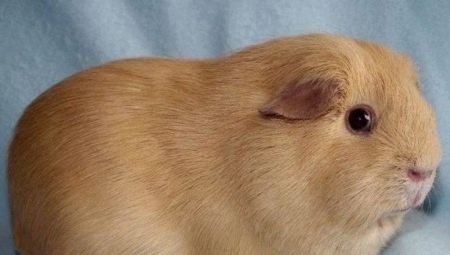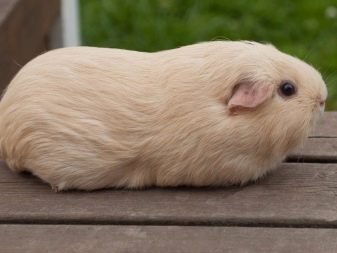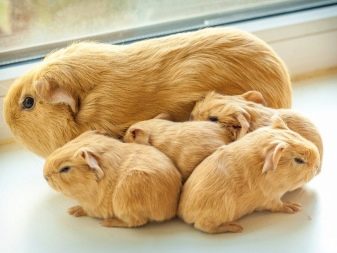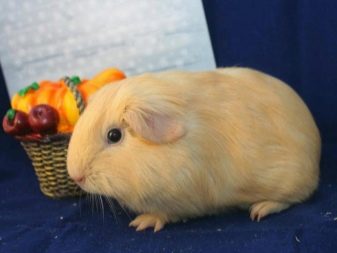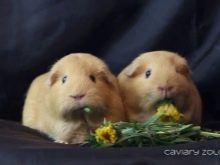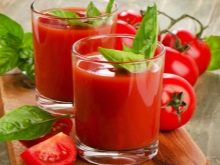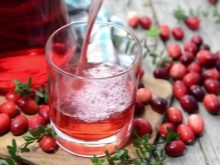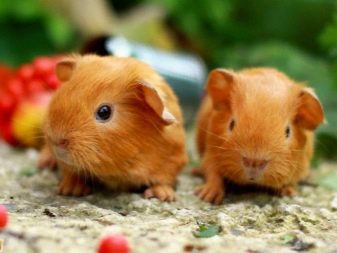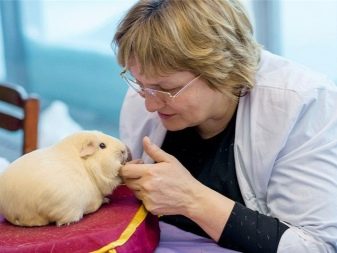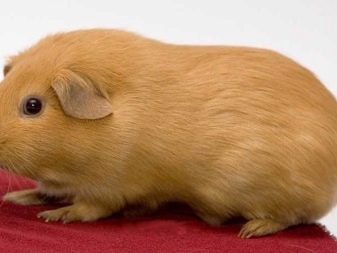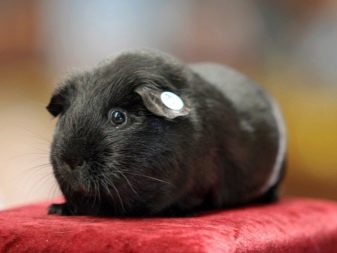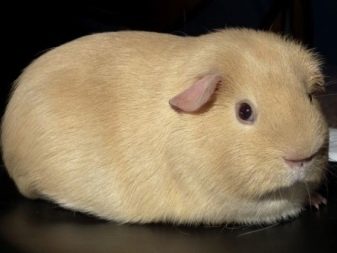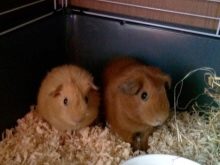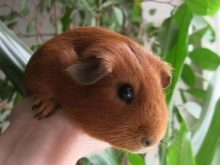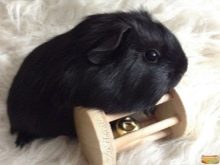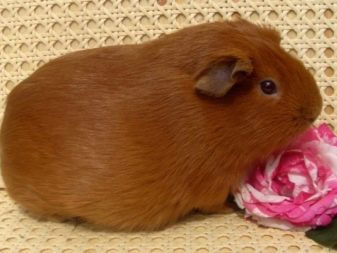Guinea pigs of the breed are the sweetest animals with smooth hair, they often become the object of adoration of children and adults. They also have the official name - English Self. This breed of pigs is very flexible nature, they love affection, attention, as well as very friendly and unpretentious in the care.
A plus for many hosts will be that they are easy to train, they know their name, they are not aggressive, they do not bite and are in good contact with people.
The origin and description of the breed
This breed is one of the oldest. Country of origin - England. Information about the appearance of these little animals appeared in the XIX century. And many immediately liked them, so they began to actively engage in breeding. In 1929, the club of lovers of these pigs first appeared, it was founded in Britain. Nowadays it exists and is engaged in breeding new species and holding exhibitions.
The very first feature of guinea pigs self is smooth and short hair. It is always monochrome. They are also distinguished by vigor, good nature and a good mind. Guinea pigs stand out for their physique. They have a small, neat head and a Roman profile. Their eyes are large, lively and intelligent, their ears are large, in the shape of rose petals.
Males of this breed become larger than females. Their weight can be 1.8 kg. But in the female and 1 kg can not gain. Individuals can be as long as 30-32 cm. This breed grows a little slower than others. And when individuals reach two years, then they are called adults.
Get a guinea pig in a pet store or nursery. The price of it depends on age, gender and color.
How to feed?
This breed, and indeed all pigs, is recommended natural food: a large amount of vegetables and fruits, fresh grass and grains, hay should also be present, small twigs of trees and shrubs. In the diet should be specialized food, but in small quantities, you need to be careful with it. Since because of it, your pet may become obese.
Throughout the year, the animal must eat well and balanced. In the summer you can stock up on necessary products for the winter and freeze them. It is necessary to dry the twigs and grass, so that hay can be included in the diet. In addition to food, clean water must always be present. Some owners sometimes give their favorite tomato juice. And also they make compotes from hips. This version of the drink is not only tasty, but also healthy.
How to contain?
These little animals are not particularly demanding of conditions of detention. The main thing is to provide animals with a large and spacious cage. It should have toys and a house where a pig could hide. For your convenience, it will be better if the pallet is extended. So it will be much easier and easier to clean. The cage should be installed in a dark place so that direct sunlight does not fall there, and there are no heaters nearby. Also in this place there should not be the slightest drafts.
Self just need movement. They should be let out to run outside the cage once a day. They get pleasure from it, as well as from communication with you. They also need it to maintain their physical condition. Those who have such a walk, do not have any problems with the digestive system, respiratory organs, less often have heart problems.
In the summer, guinea pigs can be walked outside. You will need a harness designed for them. Before leaving their fur should be treated with a means of parasites. But it’s worth going out when the weather is nice and dry.
With proper care and proper nutrition, the life span of guinea pigs is from 7 to 8 years. But there are cases when pets lived to 10 years. And if there is no good care, then the animal will live with you for long.
The uniqueness of wool and color
The peculiarity of guinea pigs self is a short and smooth coat of a uniform and uniform color, which is a huge palette of colors. The most common ones are:
- golden;
- white (with this color usually red eyes, but there are also black);
- dirty yellow;
- the black;
- brown;
- dark brown;
- cream;
- brick red.
The coat color should be even, without inclusions of any other color and without bright yellow and peach shades. Also, the fur should not be very bright and always without yellowness. The eyes of guinea pigs are usually dark in color, but they are also red. The ears and pads on the paws have a pinkish or golden hue. The coat of a healthy animal is very thick, smooth and shiny. Its length is approximately 30 cm.
If your pet has waves or rosettes on wool or interspersing other colors, this indicates that there is an unbreeding breed before you.
How to care?
These cute little animals have almost no negative qualities. Guinea pigs are very calm, friendly, communicative and treat everyone with love and interest. Therefore, even a small child can play and care with them. And you can not worry that the pig will bite him. Animals will always respond to you in return and are happy to make contact.
The procedure for caring for guinea pigs self is no big deal. But there are basic rules that must be strictly followed to make the animal comfortable. Every day you need to wash the bowl and water bottle, pour new water and remove old feed. In the event that an animal uses a tray for its own purposes, it can be cleaned there once a week or a little more often - as it gets dirty.
This breed is rather clean. And if there is no definite place in the cage to cope with natural needs, then the animals use only one place for this.
In this case, should be cleaned every day. Once a month, general cleaning and disinfection of the cage is also necessary.
Wash the animal as rarely as possible. And it is necessary to bathe in the event that you feel from it a bad smell. During washing, you must use a special shampoo. If it is not available, then it can be replaced with a baby remedy with a neutral alkaline balance. Others can cause itching, and hair may fall out. When washing your pet, you need to make sure that the water does not fall into the eyes, ears and nose.
What are the nuances of this breed?
The guinea pigs self are well developed physical data. Animals are very hardy, energetic and love to run. Therefore, for their health and good mood they should definitely let them frolic. For those who are allowed to take a walk, the possibility of getting a disease is reduced. When compared with other breeds, then this one has stronger immunity. The main problem of these animals are infections, but they do not appear as often.
If you do not follow all the rules of care, do not carry out prophylaxis and do not take measures in time, then you can face such diseases as:
- cold;
- allergy;
- convulsions;
- heart disease;
- tumors;
- various inflammatory processes;
- eye and ear diseases;
- problems with the oral cavity;
- skin problems.
Other more serious diseases in this breed, as a rule, does not occur.
Video about the breed of self can be seen below.
